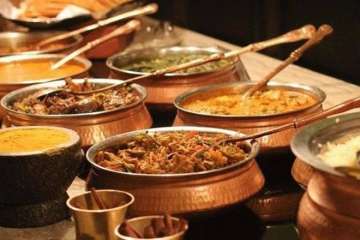Restaurants overcharging you in guise of taxation? Here’s how to spot billing errors and avoid GST fraud
Five ways some restaurants could attempt to con you into paying more and how you can protect yourself.

Nothing can be a bigger turn-off if a good dinner at a restaurant with your family and loved ones ends up in an unexpected burden on your pocket, especially if you weren't meant to pay as much for it. What's worse is that many a times, the glitch is present right before your eyes but we often tend to ignore it simply for the pain in understanding the complexity of taxation on the bill.
But what if you not just knew exactly how much you are supposed to pay but also understand the modus operandi that some restaurants may apply to fleece you.
One of the most significant decisions arrived at by the all-powerful GST Council that met for two days on Thursday and Friday was the reduction in tax rates from the prevailing 12 per cent and 18 per cent on AC and non-AC restaurants, respectively.
Starting Wednesday, November 15, all restaurants – except starred hotels – will levy a uniform tax of 5 per cent irrespective of whether they are air-conditioned or not, reflecting a tax cut of as much as 13 per cent on restaurant bills.
While there is still no clarity on whether the drastic cut in GST rates levied on restaurant bills will translate into reduced bills – restaurants have flagged concerns over the withdrawal of input tax credit benefit to them and their ability to pass on the benefit to the consumers – it is pertinent that consumers are aware of how some restaurants may still attempt to fleece them in the name of GST and the confusion that surrounds the different rates.
Right since the introduction of the GST in July this year, restaurant bills reflecting GST rates have flooded social media, either to signify the change it reflected with respect to the new taxation regime or to criticise it altogether.
Also Read: Eating out to become cheaper as GST Council cuts tax rate to 5% for both AC, non-AC restaurants
Some restaurants, however, may have found an opportunity in the ongoing confusion over the different tax rates on different sets of goods and services.
Here are 5 ways restaurants could con you and ways to protect yourself:
1. Get your math right
For starters, it is important to keep pace with the rapid changes the GST rates structure is witnessing as the taxation system matures. The government has maintained that the GST is in a transitionary phase and changes will be brought about depending upon initial learnings. Starting November 15, all restaurants – except in starred hotels with room tariffs upwards of Rs 7,500 per night – have to levy a GST rate of 5 per cent.
For instance, a consumer out for a meal in an AC restaurant should no longer see a bill reflecting 18 per cent GST (9 per cent CGST + 9 per cent SGST). Instead, it should reflect GST at 5 per cent (ideally 2.5 per cent CGST + 2.5 per cent SGST). Any divergence from this figure should be flagged to the restaurant managers.
2. Ensure the restaurant is registered under GST
There have been several instances witnessed in the past few months where restaurants have been charging consumers GST at 18 per cent without getting registered under the taxation structure. A simple background check can reveal if the GST being levied by the restaurant on your bill is legitimate or are you being taken for a ride.
3. Tracking the GST number
Every business entity registered under GST is allotted a GST number. Restaurants are no different and your bill should necessarily reflect the 15-digit GST number. If you see a GST levy added to your bill with the 15-digit GST number missing, be sure to flag the discrepancy with relevant authorities.
Also Read: More tax cuts in offing? FM Arun Jaitley hints at further ‘rationalisation’ of GST rates
4. Is the GST number authentic?
Aware that consumers were getting increasingly aware about the modalities of the GST, some restaurants have also resorted to printing a fake GST number on the bills presented to customers.
However, this 15-digit number can be easily tracked through the website of the Goods and Services Tax. Note that the sixth character of the GST number is either alphabet ‘P’ or ’C’, denoting ‘People’ or ‘Company’.
5. How to report discrepancies
Your job does not end with spotting a discrepancy or manipulation on part of the restaurant in its billing. Be sure to report it once you have ascertained through the above steps that the restaurant has cheated you. You can report the incident even if you fail to point out the discrepancy in billing to the restaurant while paying but find out later.
There are various avenues available for consumers to register their complaints regarding GST frauds. You can email your grievances at consumerhelpline.gov.in or the GST portal. You can also register your complaint by calling 1800114000, the national consumer helpline number. You can also flag your grievances with top authorities on the official Twitter handles of GST (askGST_Goi) and the Finance Ministry (@FinMinIndia).